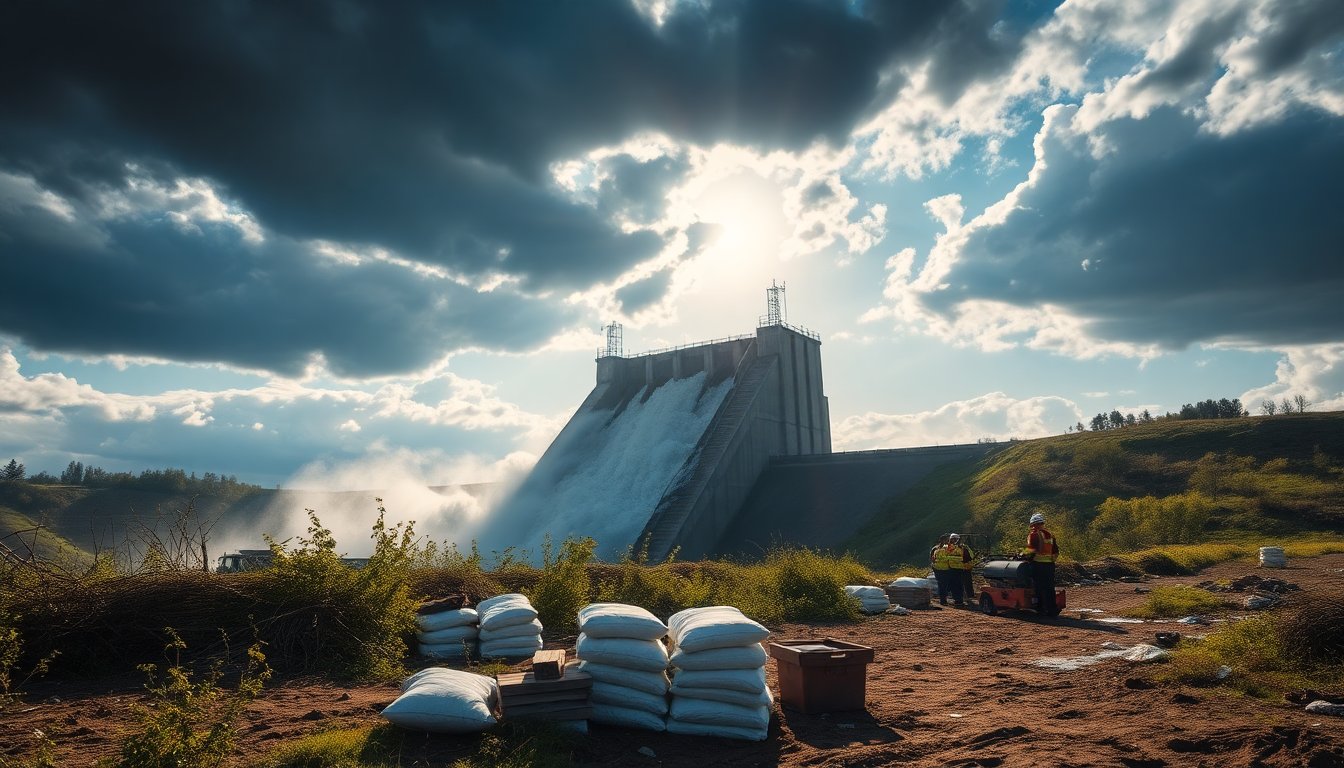Table of Contents
A dam near the Russian city of Belgorod is currently facing a serious crisis after a Ukrainian drone strike targeted it over the weekend. Local government officials reported that the Belgorod Reservoir dam was hit, leading to a significant water leak. This incident has raised alarms about potential flooding in nearby settlements, prompting urgent evacuation notifications.
Governor Vyacheslav Gladkov alerted residents via Telegram on Saturday, highlighting the risks associated with the dam’s damage. He expressed concerns about the possibility of further strikes, which could worsen the situation and lead to catastrophic flooding on both sides of the border, particularly affecting the Kharkiv region in Ukraine.
Details of the drone strike and its implications
After the attack, Governor Gladkov emphasized the need for immediate action, warning that a breach of the dam could inundate various streets, impacting approximately 1,000 residents. He assured that temporary shelters would be established for those forced to evacuate. Reports indicate that the dam was struck by three missiles, according to the Telegram channel MNS, although Ukrainian military sources clarified that a drone strike was involved.
By Sunday, the situation escalated as Ukrainian military officials reported that the dam had started releasing water, with the water level already dropping by one meter. This development has resulted in flooding affecting Russian military trenches, complicating logistical operations for Russian troops stationed near Vovchansk. The Ukrainian 16th Army Corps indicated that the flooding has effectively isolated some Russian units, making their position increasingly precarious.
Military and humanitarian consequences
The implications of this drone strike extend beyond immediate flooding concerns. With the Belgorod Reservoir’s water level dropping, Russian forces are facing logistical challenges that could severely hinder their operational capabilities. The area surrounding the reservoir has been a strategic point for launching attacks against Ukraine, making the dam a significant target in the ongoing conflict.
As the situation develops, military analysts and humanitarian organizations are closely monitoring the impact of the flooding. The strike has raised legal questions regarding the targeting of critical infrastructure, as international laws, particularly the Geneva Conventions, impose strict limitations on attacks that could lead to significant civilian casualties. While exceptions exist, the legality of targeting dams remains a highly sensitive issue.
Response and ongoing developments
In response to the crisis, the Russian Federal Water Resources Agency confirmed the drop in water levels at the Belgorod Reservoir and declared a state of emergency, initiating repair efforts. They noted that the hydraulic structure sustained damage, including issues with the bottom water outlet and segment gates, hampering their ability to manage water flow effectively.
Additionally, the complexity of the situation has been compounded by reports from Russian state media alleging that Ukraine’s attack was an attempt to create a man-made disaster. These claims reflect heightened tensions and the ongoing narrative between the two nations as they grapple with the consequences of their military actions.
Satellite imagery and verification
Independent verification from sources like the BBC has confirmed the extent of the damage to the dam, utilizing satellite imagery that shows flooding downstream as a result of the water release. This evidence highlights the severity of the situation and underscores the ongoing conflict’s impact on infrastructure and civilian safety.
As the conflict continues, the focus remains on how these events will influence military strategies and the humanitarian situation in the affected regions. The Belgorod dam has become a focal point in this tension-filled landscape, illustrating the broader implications of modern warfare on civilian infrastructure.


